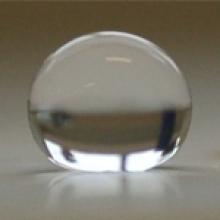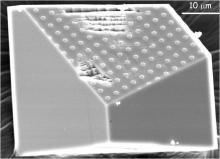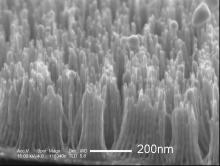The group studies micro- and nanoscale pattern formation processes that take place at surfaces and in thin films. The controlled creation of structures on small length scales is essential for many applications.
Biomimetics
Biomimetics is the study of nature, its models, systems, processes and elements with the aim of imitating or taking creative inspiration to solve other problems in society.
An example is the self-cleaning surface. A self-cleaning surface has the following characteristics: it is a water-repellent surface, and the surface has low particle adhesion. The "lotus effect" is the observed self-cleaning property found with lotus plants. It is this property that members of the group are trying to understand, in collaboration with plant and material scientists. Teflon is used to replicate the delicate nature of plant surfaces.
Biologically inspired Polymer-Inorganic Hybrid materials
Combining material science with design concepts taken from nature is a key feature for the development of new material properties. Natural materials designed by evolution have a remarkable combination of strength and toughness. Particularly interesting is the fact that biominerals are typically composite materials which are made from components which by themselves have poor mechanical properties.
The group is currently investigating the replication of polymer templates with structures ranging from the micrometre to the nanometre scale in the faces of calcite (CaCO3) single crystals.
Organic Photovoltaics
Photovoltaic solar cells are an increasingly important source of sustainable energy. Organic photovoltaics (OPVs) offer in theory a far cheaper technology than conventional silicon based inorganic cells due to relatively inexpensive material costs and accessibility to solution processing techniques.
This project has benefited from successful collaborations with the Optoelectronics group, Nanoscience group, the Chemistry and the Material Sciences departments.



